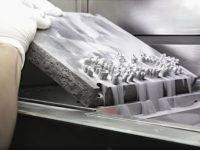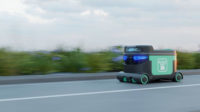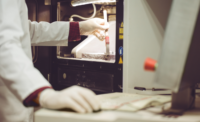NDT | Additive Manufacturing
Technology Solutions for Large Applications in Additive Manufacturing
Understanding what technologies are available is the first step.

Image source: Getty Images
What happens when your parts don’t fit in the machine envelope? We now have machines that can build a boat without stopping. That is not a small machine. However, the material dispensing options on larger platforms may not work with the intended geometry being produced. AM machines have enabled amazing capabilities but there are still many applications that are not properly satisfied with the current state of technology. How can we make products that need critical material/dimensional performance and are also of a size that becomes very difficult to rapidly and economically produce?
We will look into technologies that can address these applications. On the surface we have complications from the materials that can be produced via AM. Secondly, we have the speed of the machines. We also need to look at the cost drivers and then we need to address getting the right geometry. The right geometry considering build speed and final assembly.
The first and simplest option is to try printing parts directly off the machine. This is best because we understand the speed, cost, and deliverables of a part straight off the machine. We even understand the factors associated with a simple assembly. To assemble a few parts is not much to ask for but we need to look at how this affects the properties and consistency of the final parts. If we can get acceptable materials, can we get the right finish and throughput? The more production demands we apply, the more difficult it is to get a viable solution. As the geometry gets larger, the number of builds also increases.
Going to production tools is always an option if the properties and finish cannot be altered. This will match the production intent. Unfortunately, it also matches the production lead time and this is where most problems start. We can consider bridge tooling from aluminum tools but this still required the same design consideration and much of the time to produce. Not trying to reinvent the wheel, we can look at an older art of producing Room Temperature Vulcanization (RTV) tools.

These RTV tools can be produced in a matter of days or weeks with the assistance of AM. Having the ability to reproduce a music album, for example, they can replicate any desired appearance criteria. The materials do have a few considerations still needed. These systems are urethane-based technology, or thermoset chemistry. While there are many urethanes available, finding one that matches the production intent is near impossible. This adds another challenge to finding the best option.
So now we have technologies to meet the production intent but still need to evaluate significant time considerations. How can we define an option that meets the needs of the application, the budget constraints and the time allowed? This is different with every application. Understanding what technologies are available is the first step. We can now evaluate the options of printing the geometries and assembling the final part, utilizing RTV tools, aluminum tools or production tools. All of these have benefits and these need to be evaluated with each application. Which technology is the best for any given application will require consultation from an approved supplier. Understanding that a technology may not work for the current application should not preclude it from future consideration. We see all technologies continually advancing and it may only take one advancement to make your application a success.
Looking for a reprint of this article?
From high-res PDFs to custom plaques, order your copy today!





